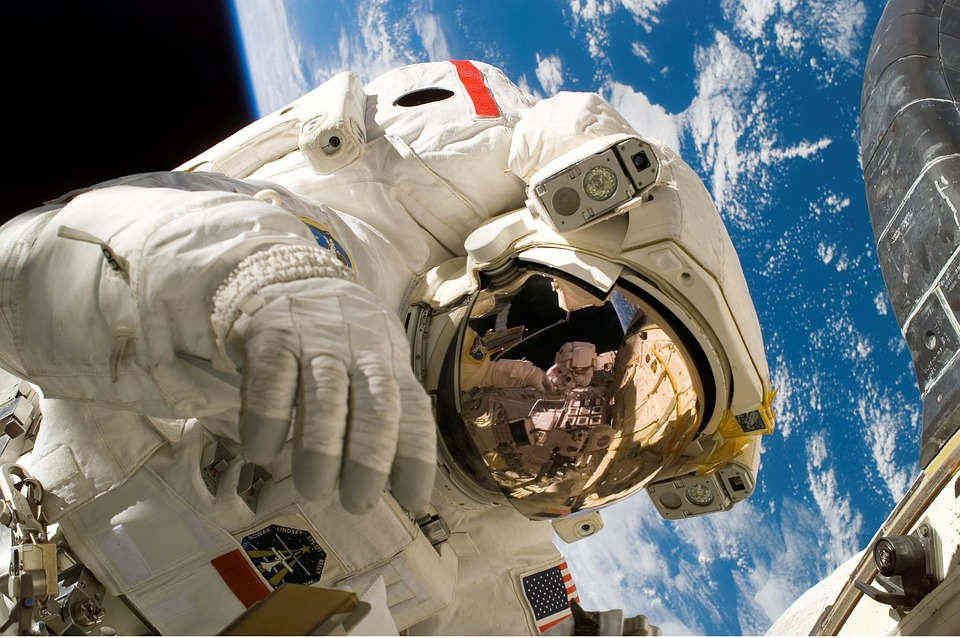Flying in space where gravity doesn’t pull us down. Putting on a space suit before walking into a spaceship. Launching off the ground and being thrown into the sky and landing on a planet where no one has ever been before. This always sounded like a dream. Something that could only happen in movies because it seemed too good to be true; until about 50 years ago. When the US-American rocket ship “Apollo 11” landed on the moon in 1969, a huge milestone for mankind was set. From then on, walking on the moon didn’t seem like a dream anymore, it became a possibility.

Neil Armstrong (1930-2012), the astronaut who went down in history as the first man on the moon.
For him, it all started with an air show. After seeing the planes in the show, he was so fascinated by them that he began flying himself, getting his pilot’s license while only being 16 years old. He went on to study aeronautical engineering and joined the Navy as a fighter pilot. After participating in the Korean War, he finished his degree and became a test pilot. When the National Aeronautics and Space Administration (NASA) was founded in 1959, Armstrong became one of its members and got selected in a human spaceflight program (“Project Gemini”) which paved the way for his first moon landing.
The “Apollo 11” mission started on July 16th, 1969. Its crew members were Neil Armstrong, Edwin “Buzz” Aldrin, and Michael Collins. The main force behind this mission was President John F. Kennedy. Eight years before the launching of Apollo 11, he set a national goal to perform a crewed moon landing and successfully return to Earth. Therefore, the Apollo 11 mission was created.
The historic spaceship consisted of three different parts:
The Command Module (“Columbia”)
→ Carried the three astronauts; part that returned back to the Earth
The Lunar Module (“Eagle”)
→ Docked to the front of the command module; part in which the astronauts descended to the moon and ascended back
The Service Module
→ Attached to the back of the command module; carries its fuel and power

While the Command Module Pilot Michael Collins stayed in the command module, Edwin Aldrin, as the Lunar Module Pilot, flew himself and Neil Armstrong (Commander) to the moon and back.
They landed in an area called the “Sea of Tranquility” and with the words: “The Eagle has landed”, Armstrong reported the module’s safe landing on the moon’s surface on July 21st, 1969.
As Neil Armstrong put his feet onto the moon, he said his famous quote: “That’s one small step for man, one giant leap for mankind”. Edwin Aldrin then left the spaceship 19 minutes later and they gathered samples of moon-surface materials for return to Earth.
After a total of around 195 hours, 18 minutes and 35 seconds, Apollo 11 splashed down in the Pacific Ocean. The mission only lasted about 36 minutes longer than planned, showing that the years of research and calculations were essential and crucial to a successful moon landing.
Now that you got more information about the first people to ever walk on the moon, you can make more sense of the famous picture of the US-American flag planted on the moon’s surface. As a fun side fact, one thing you might not have known yet is that the flag was actually blown over during takeoff, but that is a whole other story for a different article.
Sources:
https://www.nasa.gov/mission_pages/apollo/missions/apollo11.html (Sarah Loff, November 29th, 2022)
https://www.rmg.co.uk/stories/topics/how-many-people-have-walked-on-moon (Royals Museum Greenwich, November 29th, 2022)
https://www.britannica.com/science/Apollo-space-program#ref1259215 (The Editors of Encyclopaedia Britannica, November 29th, 2022)

